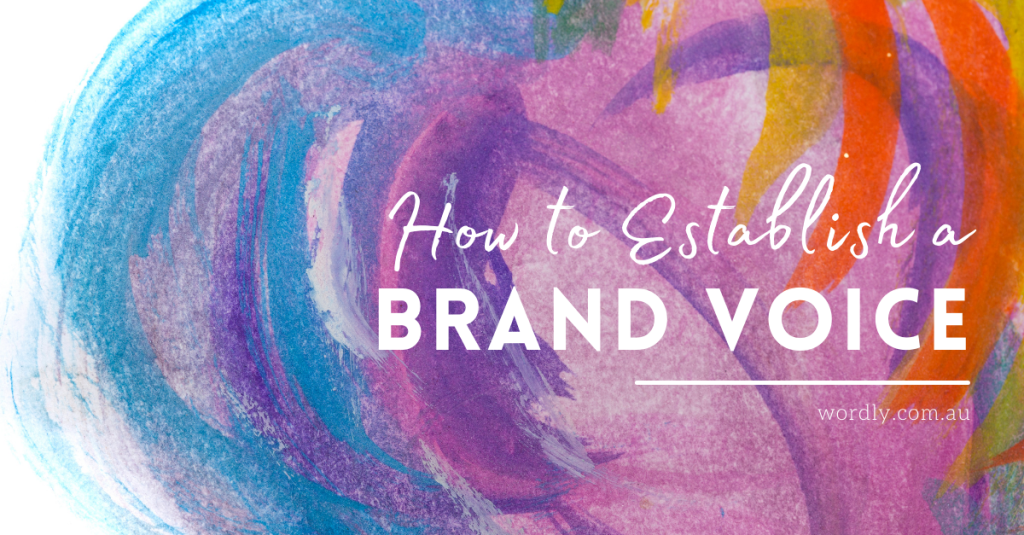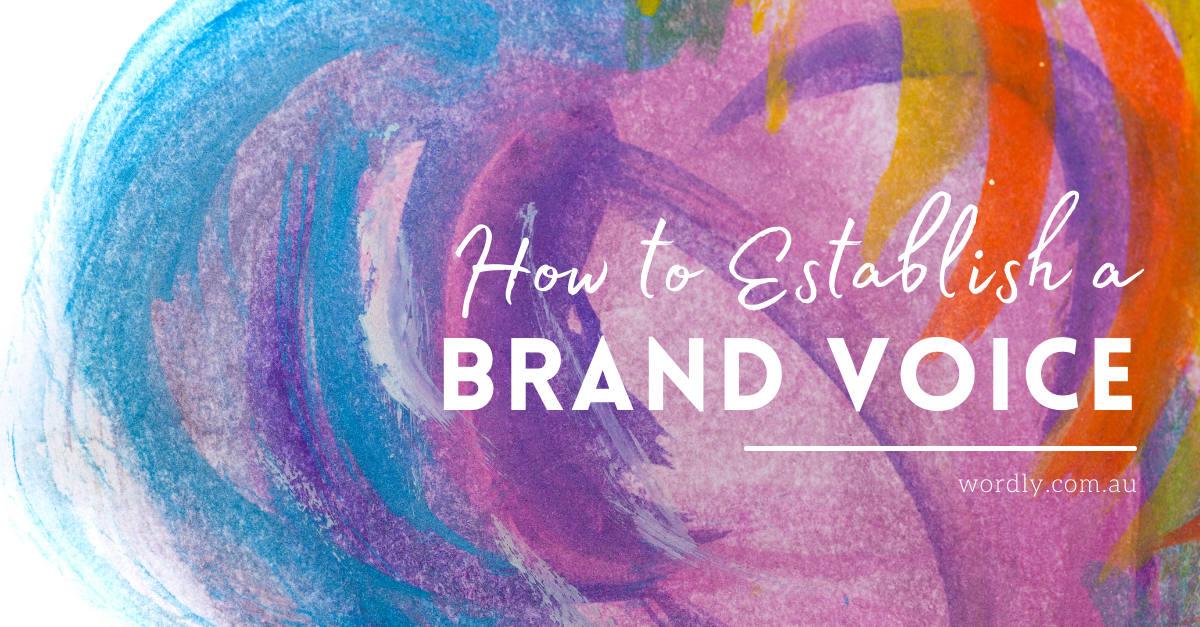Have you ever thought about how your written voice portrays your company?
The right voice can take you from a jargon-riddled minefield of nonsense to a relatable and engaging channel of communication with your customers.
I mean, why say you have ‘an uncompromising ambition to execute an exemplary written expression portfolio to engage your academic counterparts’?
When what you really mean is that you want a handy run down on how to bang out a brand voice framework that is simple, effective and not utter-BS.
See what we did there?
Let’s start by understanding what exactly a brand voice is.

What is a brand voice?
“Brand voice refers to the personality and emotion infused into a company’s communications.” – Coschedule.
This is the best way to capture what a brand voice is, but also why it’s so important. A brand voice is – or at least, should be – consistent across every communication outlet. It captures the essence of your company. It embraces rather than alienates your audience. It paints a picture of the person behind your company, and essentially positions your customers to decide if this is the type of person they want to interact with.
Having a strong, easily identifiable brand voice allows your company to stand out from its competitors. So – how do you establish a brand voice that is unique and reflective of your brand?
Examine Your Existing Content
Finding a place to even begin can seem desperately aimless. We find that a good starting point is to look inwardly at the voice you’ve already been employing. Any format you’ve communicated externally with will embody some form of personality, so let’s take a look at the voice your company naturally assumes.
This will require you to round up an arsenal of content you’ve already got on the go. Reach for marketing collateral, website copy, social media posts and any blog or editorial.
Which pieces uniquely and specifically reflect your company?
Which pieces performed the best?
Which ones accurately align with your company values and mission?
Which ones do you find most engaging?
Start creating a pile of the stellar pieces that tick the boxes above. Pay particular attention to how your audience responded to certain pieces (such as comments, social engagement, feedback). Now – try and use three adjectives to describe the personality of your best performing / most favourable pieces.
Congratulations! You’ve just outlined a very rough, grey-leaded sketch of your brand voice! It’s also very malleable at this point, and we’re about to start making some tweaks.
Look at Your Audience Persona
This step ties in with the content analysis you’ve just banged out. Let’s home in on that audience response we touched on.
Who is your target customer? When you think of your product, you should have a pretty clear idea of the persona most likely to resonate with it. Perhaps they’re a middle-aged businesswoman who enjoys watching comedy re-runs and scrolling LinkedIn in their spare time? Perhaps they’re a young trades apprentice who plays local football on weekends and spends most of their free time in a Youtube wormhole?
Whoever your stereotypical customer is, there will be unique features to how they communicate. Ask yourself: what language would they use? What level of formality do you want to engage them with? What are some personality traits you want to convey?
You want your audience to feel akin with you so that you can begin to foster a relationship. You don’t want to come across as the insufferably ‘cool’ mum try her best to assimilate with her daughter’s friends. This can be avoided by constructing a comprehensive brand voice guide.
Dos and Donts chart
Here is where we merge everything you’ve gleaned so far into a comprehensive ‘play book’ to lean on. Compile the desirable traits from your internal analysis and your audience analysis into a column. These might include playful, funny, authoritative, confident, educational, edgy, youthful, calming, energetic, or aggressive.
These traits on their own can be quite broad. For example, ‘funny’ can be executed with dry, sarcastic expression, or with goofy puns. To nail down your voice into a clearly distinguishable form, we love a good ‘do’s and don’ts’ list.
Basically, pick one trait and expand on what you do and do not want to use when channelling that quality.
For example:
| Trait | Do | Don’t |
| Playful | Use cute language Embody the ‘always chirpy’ friend Use fluffy, sugary adjectives Use pop-culture references | Use dry humour Sound uneducated / overly childish Use overly-formal language Lose track of the message |
Another exercise used to cement a brand voice is the ‘this-not-that’ practice. It works much the same way as the listing above, but instead directly compares two adjectives.
For example:
We are cheeky, but not offensive.
We are informative, but not patronising.
We are funny, but not goofy.
Don’t get too caught up in formulating an eight page thesis on the adjectives. Stick to your core 3 or 4 and you should be able to lock down a pretty solid voice.
Write it all down/create a voice style guide
The most important part now is to document everything you’ve covered so far – particularly your expansive lists above. Chances are you aren’t going to be the only person handling your company’s communication for the rest of its lifetime.
Having a document to refer back to means that multiple team members can easily employ the same brand voice. It also gives you a framework to refer back to if you lose sight of your company persona, or if you want to evolve your voice as the company itself evolves.
Did we mention that we’re actually kind of amazing at this brand voice stuff? If you don’t have the time, patience or sheer will to get cracking on your persona – allow us! The Wordly gang LOVE bringing a company voice to life. Hit us up to find out more.



